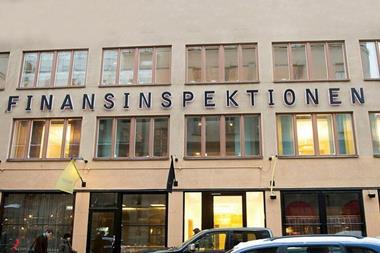Global – DB Real Estate
Please give a very brief introduction as to where/how the company invests in the industrials sector?
DB Real Estate has six investing businesses which between them invest in direct real estate of all types worldwide, including industrial, and of all risk profiles from long-leased prime to opportunistic secondary.
How does the industrials sector break down in terms of opportunities/investment internationally? Is it still largely driven by domestic sector approaches, regional or global?
Primarily still a domestic market with the exception of the international facilities companies such as ProLogis. Stock type, lot sizes and ownership profiles vary significantly between countries, making it far easier for a large institution to invest in some countries (eg the UK) than others (eg Germany)
What have been the most important trends in the industrials sector in recent months?
Continued yield compression; shifting of attention from major city entrepots to trade routes to the east; ongoing clustering, outsourcing, and merger activity within the distribution industry
What is the outlook for the sector over the next year and beyond and what will be the drivers of this?
Continuation of above trends. Additionally, industrial will probably be the first sector to recover once the economic recovery is in full swing, due to (a) little/no supply overhang and (b) early pick-up in industrial activity as stocks are rebuilt and equipment spending recovers contrast retail spending and employment, the main drivers of retail and office respectively). Institutions are likely to try to raise their industiral weightings.
Is industrial property still an investable sector? Has it been completely replaced by distribution and logistics?
Everyone I know means “distribution” when they say “industrial”. We would not invest in manufacturing plant.
Can institutional investors manage industrial property successfully or do they need specialist asset managers who are prepared to deal with unglamorous buildings, tenants and problems?
Depends on the investor, but most (including us) would use managers.
Does industrial and distribution only work in large lot sizes and large estates where tenant requirements can be actively managed?
Again this depends on the investor, but generally yes (DBRE included). Finding efficient lot sizes is a major problem in sourcing industrial stock.
Is industrial a sector that suffers from high depreciation and obsolescence?
Yes – and there are probably some investors out there who do not fully take account of this!
Does industrial and distribution only work near airports?
Only near major distribution hubs, but these do not have to be airports
How risky are the large logistics occupiers?
Not very risky at all – no more so than major office or retail occupiers
Nick Tyrrell is head of European research at DB Real Estate in London
Continental Europe – Aereal Asset Management
Please give a very brief introduction as to where/how the company invests in the industrials sector?
Aareal Asset Management, a division of the Aareal Bank group in Wiesbaden, invests in logistics properties through its investment vehicle, the Aareal EuroLogistics Fund. The fund, which has an anticipated size of e500m, invests in Germany (35–45%), France (20–30%), Benelux (15–20%) and Italy and Spain (15–20%).
How does the industrials sector break down in terms of opportunities/investment internationally? Is it still largely driven by domestic sector approaches, regional or global?
The industrial investment sector is increasingly driven by institutional investors that invest internationally. They focus on major international trade and distribution routes. The fact that Europe for example is a free trade zone has enforced this trend significantly in past years. However, only a few investors really invest globally, because only few have the necessary expertise to handle all the challenges connected to global operations. Nevertheless, more and more investors will try to operate on more than one continent and thus global investment will become more common.
What have been the most important trends in the industrials sector in recent months?
One important trend is the tendency of small and mid sized logistic service providers to concentrate money and efforts on their core business activity. Thus a large amount of industrial real estate that was formerly owned by those companies is now available for institutional investment.
What is the outlook for the sector over the next year and beyond and what will be the drivers of this?
One of the main drivers for the sector will surely be consumer behaviour of private households and related to this the economic upswing. An increase in consumer demand will be the dynamo to this sector. The German topic of national motorway tolls won’t have as large an impact as expected. Most logistics providers have already reacted and started to include the increased costs for the tolls in their price calculations.
Can institutional investors manage industrial property successfully or do they need specialist asset managers who are prepared to deal with unglamorous buildings, tenants and problems?
It is not about unglamorous buildings or tenants. It is about the fact that many of these buildings aren’t simple storage facilities but highly complex and fascinating constructions which have a very high degree of automation. Thus it can be very difficult for somebody who normally just deals with office buildings to understand related problems. Therefore I would state that in order to be able to manage an industrial property or even a portfolio, the least one must have is experience in this sector. If technical expertise is added to that its even better.
Does industrial and distribution only work near airports?
Definitely not. It works at locations near large agglomerations of people, with good access to motorways, railways and/or waterways. It also heavily depends on the business of the tenant. Some companies won’t even need some of the points mentioned in order to operate their business. Furthermore it is important that the property is not subject to noise regulations or working hour restrictions.
How risky are the large logistics occupiers?
If they are well managed, meaning that they are able to adjust to new situations in time (toll, trend to third-party logistics etc.) they do not pose a larger risk to an investor than any company in any other branch. Only if a company decides to remain at a certain development stage without reacting to new challenges will it face severe problems sooner or later.
Charles Pridgeon is managing director of Aareal Property Services in Amsterdam
UK – Brixton Investments
Please give a very brief introduction as to where/how the company invests in the industrials sector?
For Brixton it’s the south east of the UK – pure and simple. In terms of location at the end of last year we were 40% in Heathrow and 20% in Park Royal, for example. If you look at the portfolio as a whole, half of it is in Greater London.
How does the industrials sector break down in terms of opportunities/investment internationally? Is it still largely driven by domestic sector approaches, regional or global?
We’re very much specialists in our market and that’s how we extract our value. There are players that look at industrials on a pan European or on a global basis, however. It’s just a question of different approaches.
What have been the most important trends in the industrials sector in recent months?
Around 60% of our space is in distribution, but the beauty of industrial buildings is that you can use them to move things or to make product in.
The most important recent trend for us has been a pick-up in demand from the occupiers due to increased economic activity and greater confidence.
What is the outlook for the sector over the next year and beyond and what will be the drivers of this?
I think it’s positive. We will see an increase in demand, although I think it will be on a steady scale. We’re not expecting massive growth, but there will be positive moves.
Is industrial property still an investable sector? Has it been completely replaced by distribution and logistics?
Industrial property is very much an investable sector. My earlier point though was that industrial buildings are so flexible and that as long as you get the design right then you can use it for either distribution or production. As long as you’ve got the building in the right place then you can work within all the sub-sectors of the industrial market.
Can institutional investors manage industrial property successfully or do they need specialist asset managers who are prepared to deal with unglamorous buildings, tenants and problems?
I think they need specialists. Essentially because we understand the market and know the players and so hopefully we should be able to spot the trends out there quickly and that’s where you get your commercial advantage. We also know what industrial properties are worth so we can identify when something is underpriced in the market for investment.
Furthermore it takes time to build up a relationship with tenants also and if you’ve got existing relationships with occupiers then you tend to get repeat customers who will have more than one unit with you. That’s a key part of what we do.
Does industrial and distribution only work in large lot sizes and large estates where tenant requirements can be actively managed?
I think it works better in large lot sizes and I don’t mean just one single building, I mean large managed estates where management can make a difference. First of all you offer a tenant a controlled environment with security and landscaping, etc, so you have some control of the location of their business. The advantage from an investment view is that you can do a letting on unit one and that will have a knock-on advantage on unit two and three, so to speak.
Is industrial a sector that suffers from high depreciation and obsolescence?
No, it actually benefits from low depreciation and low obsolescence.
It’s much better than, say, an office building, where the plant machinery in an office building, which makes up most of the value, needs to be replaced on a regular basis. A shed is a very basic box!
Does industrial and distribution only work near airports?
No, but we believe it works better near airports, which is why one of our key focuses is Heathrow. It’s more to do with where land is in short supply and where demand is high, but it depends on the airport. Transport links are essential and it’s about being nearer the major ones.
How risky are the large logistics occupiers?
I think the major players are pretty steady. As in any business there are the major brand leaders, mid-size national distributors and the smaller ‘freight-forwarders’, who have all the benefits and risks of being a smaller business.
Peter Dawson is senior director, investment and asset management at Brixton Investments
US – Exeter Real Estate Advisors
Institutional investors are attracted to industrial product for its stable cash flow.
Faced with aggressive prices, buyers have had to be more creative in sourcing product. Institutions have formed turnkey ventures with local developers while developers have swapped investment interests in finished buildings for fully entitled surplus land held by institutions. Pricing remains driven largely by land costs.
In major industrial markets with particularly high vacancies such as Dallas (18.1%), Atlanta (16.6%), Phoenix (14.4%) and San Francisco (13.1%), tenants are demanding better quality buildings and lower occupancy costs.
US companies continue to be squeezed by thin margins and respond by demanding building designs with locations that allow for greater efficiencies and speed to market.
Demand characteristics differ considerably among the three industrial product types – warehouse/distribution space, manufacturing space and flex. Warehouse/distribution space is the hottest market and demand continues to be driven by the movement of domestic manufacturing offshore, particularly to Asia. Concurrently, supply chain logistics are demanding increased economies of scale. Warehouse size is still on the rise as many companies consolidate facilities and opt for locations conveniently served by major ports, airports and highway interchanges.
The eroding US manufacturing base continues to dampen demand for manufacturing space. Vacancy rates for this industrial product remain high with limited relief in sight. Further compounding the problem is the large scale and protracted period of economic fallout from the ‘tech wreck’.
Industrial flex space is also a laggard in most markets around the US. This hybrid product type, which can be fitted out with widely varying percentages of office finish, suffers in weak office markets.
One of the bright spots in the US economy has been consumer confidence and the performance of retail sales throughout the recession. This has helped support the industrial warehouse market and kept regional economies going as business expansion starts to gather steam. Atlanta and Phoenix are two of the better-positioned metro areas to benefit from an economic rebound. Phoenix job growth plodded along even during the recession, while Atlanta’s turnaround occurred just recently.
Investment professionals in other regions are now hoping that Atlanta’s increasingly visible recovery is a bellwether for the balance of the US.
Dana Rowan is managing director of Exeter Real Estate Advisors, a Boston-based investment advisory firm. He is also the former national chairman of the National Association of Industrial and Office Properties, based in Herndon, Virginia












No comments yet